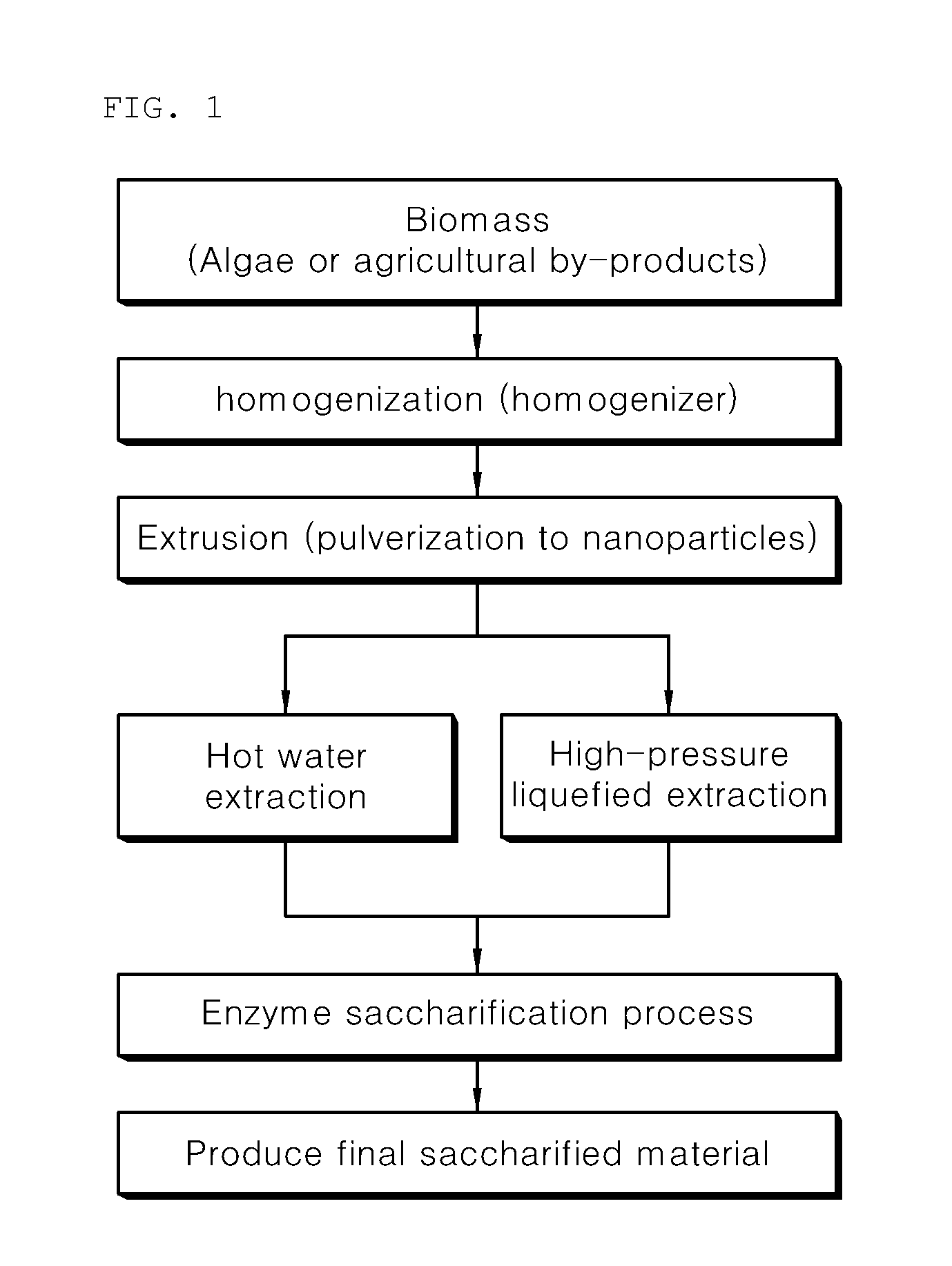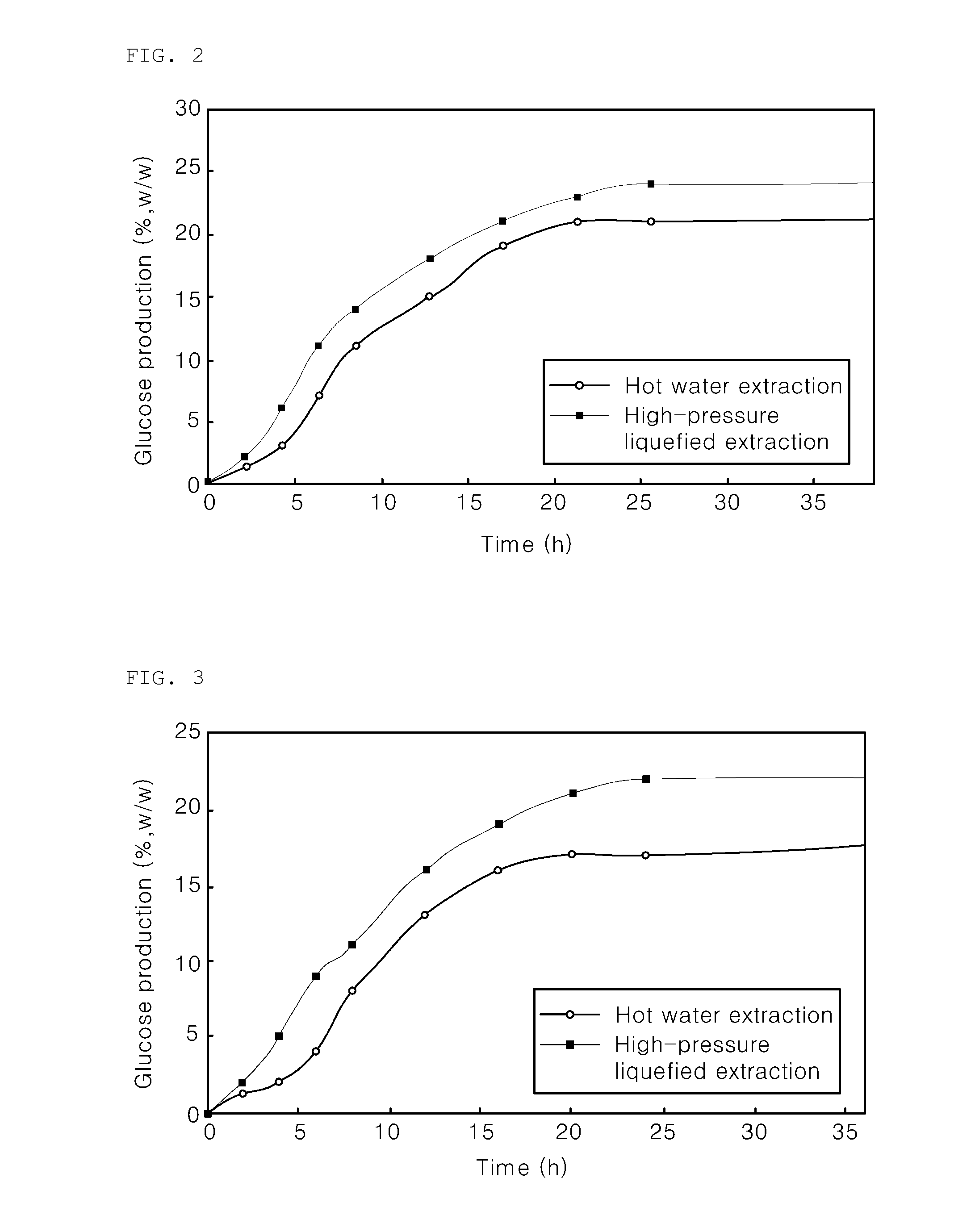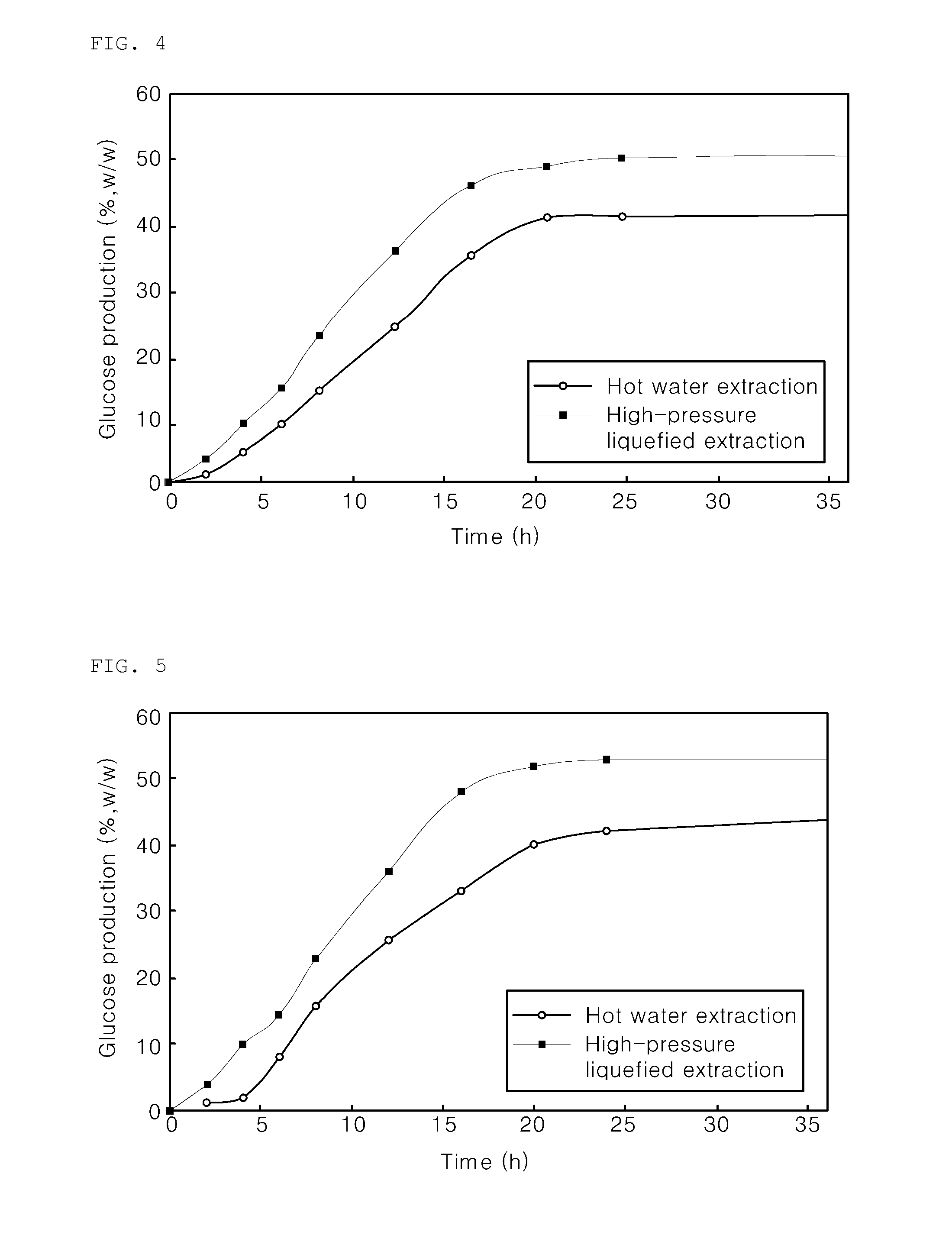Glycosylation method of algae or agricultural by-products comprising high-pressure extrusion pulverization step
a technology of pulverization step and glycosylation method, which is applied in the field of saccharification of biomass, can solve the problems of high oil price, high cost, and big challenge of human development of substitute energy, and achieve the effects of reducing the cost of production
- Summary
- Abstract
- Description
- Claims
- Application Information
AI Technical Summary
Benefits of technology
Problems solved by technology
Method used
Image
Examples
embodiment 1
Saccharification Pretreatment Process of Ulva pertusa kjellman
[0042]In order to remove moisture from the ulva pertusa kjellman, after cleaning ulva pertusa kjellman collected from Jeju-do, the ulva pertusa kjellman was dried for 3 days at a temperature of 100° C. in a hot air drier, sealed and stored.
[0043]The dried ulva pertusa kjellman was pulverized in size of about 1 mm to 2 mm, put into a distilled water to the extent that the concentration of the ulva pertusa kjellman is 10% (w / v), and mixed with the distilled water. Then, the ulva pertusa kjellman was put into a homogenizer, homogenized at 25,000 rpm for 20 minutes, and crushed. After filtering out upper portions of crushed ulva pertusa kjellman samples by 95% of volume, the sample was extruded by passing the sample through a pipe having a diameter of 100 μm at the pressure of 25,000 psi. The extruded ulva pertusa kjellman was used as a sample of following experimental example 1.
embodiment 2
Saccharification Pretreatment Process of Gulfweed
[0044]The saccharification pretreatment process performed in Embodiment 2 was performed similarly to that in embodiment 1 except that gulfweed collected from Jeju-do was dried for use instead of the dried ulva pertusa kjellman.
embodiment 3
Saccharification Pretreatment Process of Barlay Stem
[0045]The saccharification pretreatment process performed in Embodiment 3 was performed similarly to that in embodiment 1 except that a barlay stem remaining after harvest was cut to a length of 1 cm, and dried at a normal temperature for one week for use instead of the dried ulva pertusa kjellman.
PUM
| Property | Measurement | Unit |
|---|---|---|
| pressure | aaaaa | aaaaa |
| diameter | aaaaa | aaaaa |
| size | aaaaa | aaaaa |
Abstract
Description
Claims
Application Information
 Login to View More
Login to View More - R&D
- Intellectual Property
- Life Sciences
- Materials
- Tech Scout
- Unparalleled Data Quality
- Higher Quality Content
- 60% Fewer Hallucinations
Browse by: Latest US Patents, China's latest patents, Technical Efficacy Thesaurus, Application Domain, Technology Topic, Popular Technical Reports.
© 2025 PatSnap. All rights reserved.Legal|Privacy policy|Modern Slavery Act Transparency Statement|Sitemap|About US| Contact US: help@patsnap.com



